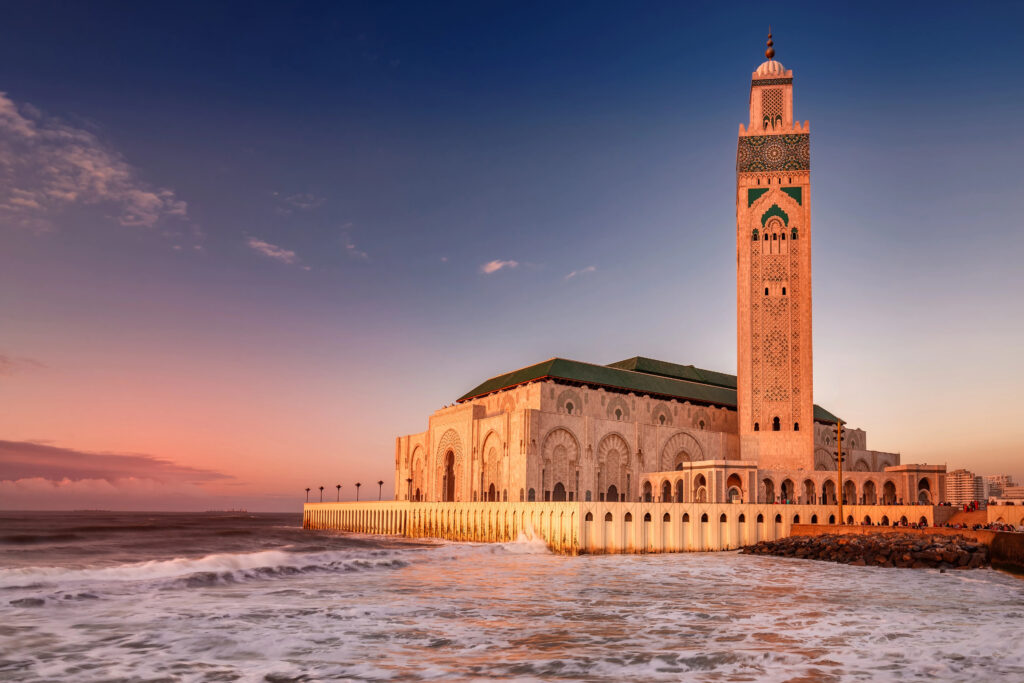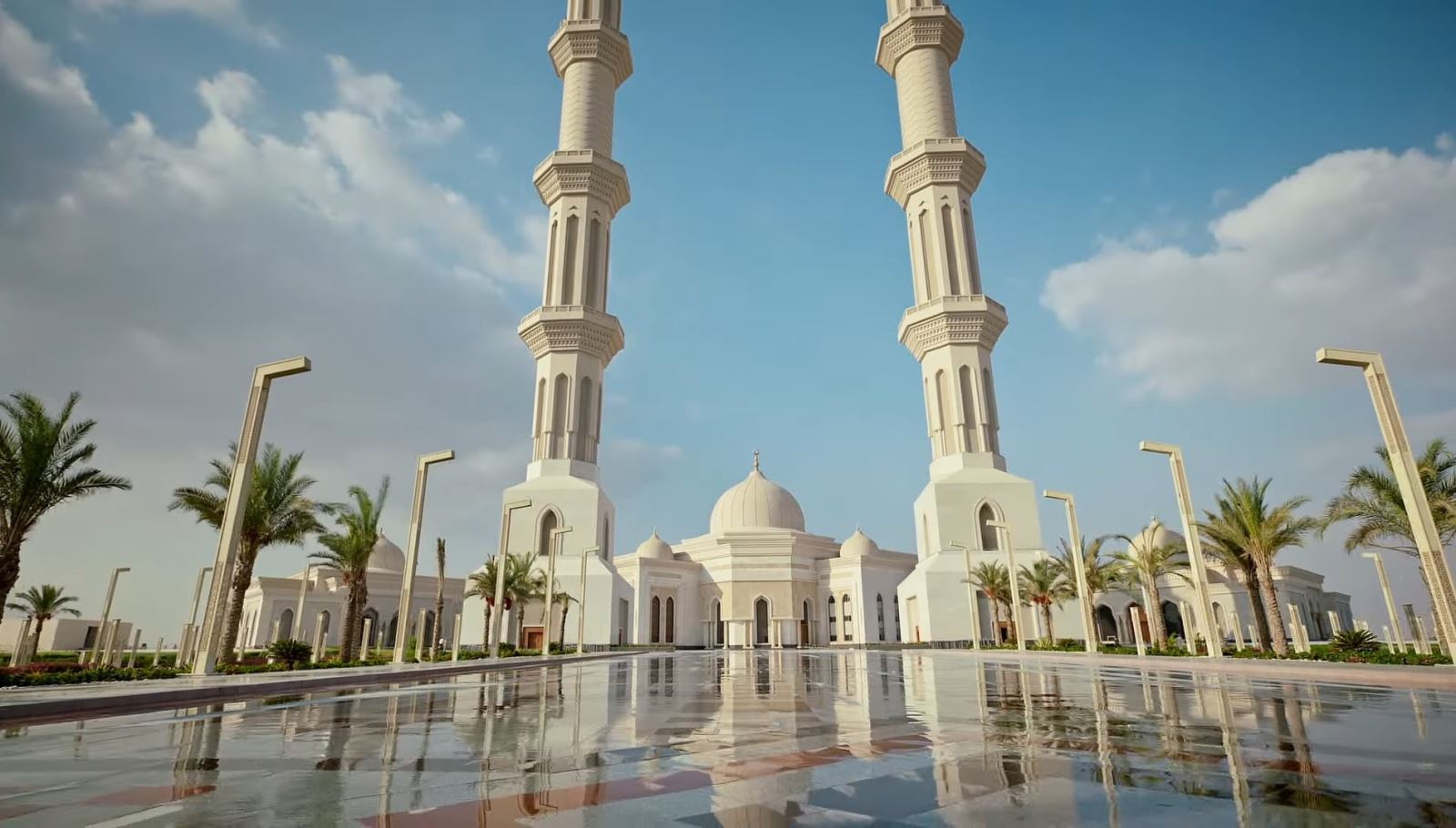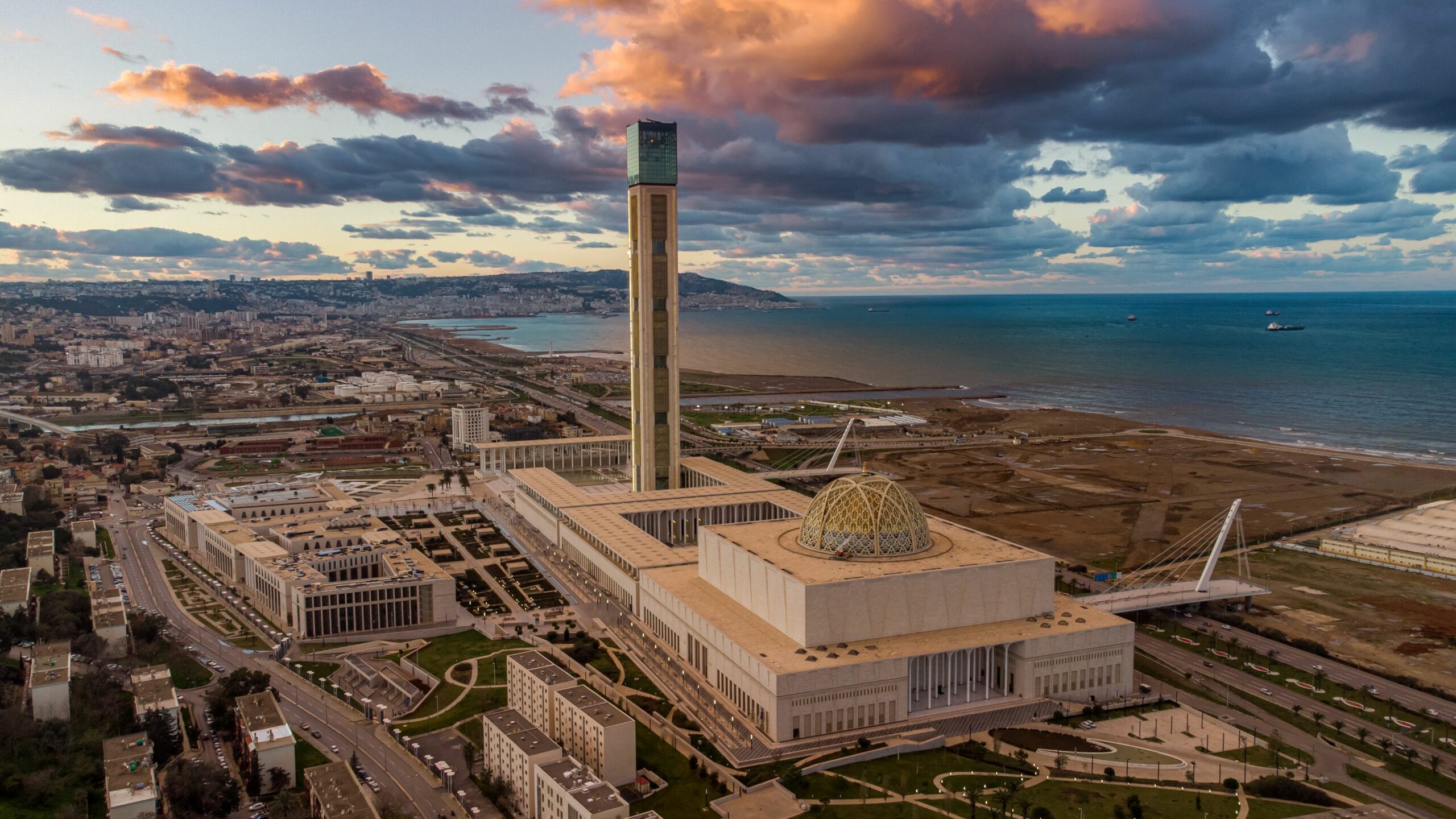Hassan II Mosque: A Jewel in Casablanca, Morocco

The Hassan II Mosque, located in Casablanca, Morocco, is an architectural marvel and a significant religious site. As one of the largest mosques in the world, it stands as a testament to Morocco’s rich cultural heritage and Islamic architectural brilliance. This article explores the history, design, and significance of the Hassan II Mosque.
Historical Background
Commissioned by King Hassan II, the mosque was designed to reflect Morocco’s deep-rooted Islamic traditions and its commitment to architectural excellence. Construction began in 1986 and was completed in 1993. The mosque was built on a promontory looking out to the Atlantic Ocean, symbolizing the connection between land and sea, heaven and earth.
Architectural Brilliance
The Hassan II Mosque is renowned for its stunning architecture and intricate details. Here are some of its key features:
Magnificent Minaret: Standing at 210 meters (689 feet), the minaret of the Hassan II Mosque is the tallest in the world. It is a defining feature of the Casablanca skyline and a symbol of Islamic faith reaching towards the heavens.
Spacious Prayer Hall: The mosque’s prayer hall can accommodate up to 25,000 worshippers, with an additional 80,000 people fitting in the courtyard. The hall is adorned with exquisite marble floors, intricate mosaics, and beautifully carved woodwork.
Oceanfront Location: Built partially over the Atlantic Ocean, the mosque offers breathtaking views and a serene ambiance. The glass floor allows worshippers to see the sea beneath, reinforcing the connection between the mosque and nature.
Innovative Design Elements: The mosque features state-of-the-art technology, including a retractable roof that opens to the sky. The use of modern construction techniques combined with traditional craftsmanship makes it a unique blend of old and new.
Luxurious Materials: The mosque’s interior is lavishly decorated with materials sourced from across Morocco, including marble from Agadir, cedar wood from the Middle Atlas, and granite from Tafraoute. The intricate tilework, known as zellige, showcases the finest Moroccan craftsmanship.
Cultural and Religious Significance
The Hassan II Mosque is more than just a place of worship; it is a cultural landmark that represents Morocco’s Islamic heritage. It serves as a center for religious education and cultural activities, fostering a sense of community and spiritual growth.
Educational Hub: The mosque houses a library and a museum, providing resources for religious education and the study of Islamic art and culture.
Tourist Attraction: Open to non-Muslims for guided tours, the Hassan II Mosque attracts thousands of visitors each year. It offers a unique opportunity to appreciate Islamic architecture and learn about Moroccan culture.
Visiting the Hassan II Mosque
A visit to the Hassan II Mosque is a must for anyone traveling to Casablanca. Here are some tips for your visit:
Tour Times: Guided tours are available multiple times a day in several languages. It’s recommended to check the schedule in advance and arrive early to secure your spot.
Dress Code: Visitors should dress modestly, covering their shoulders and knees. Women are advised to wear a headscarf, although it is not mandatory.
Respectful Conduct: As a place of worship, visitors should maintain a respectful demeanor, refraining from loud conversations and photography during prayer times.
Conclusion
The Hassan II Mosque is a breathtaking example of Islamic architecture and Moroccan craftsmanship. Its impressive size, beautiful design, and cultural significance make it a jewel in Casablanca and a must-visit destination for travelers. Whether you are there to pray, learn, or simply marvel at its beauty, the Hassan II Mosque offers an enriching and unforgettable experience.


